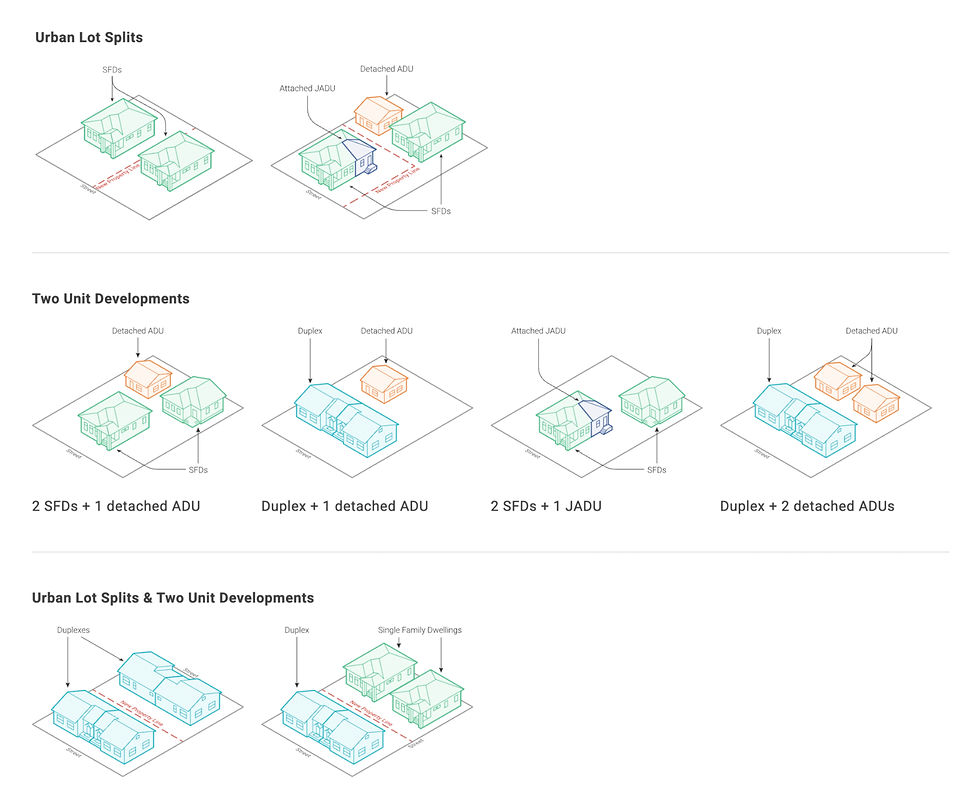California Just Passed Four New ADU Laws — What’s Actually Changing?
- Yvonne Yang
- 1 day ago
- 3 min read

California has just passed a few new ADU-related bills — AB 462, AB 1154, SB 543 — which, together with the already-effective SB 9, make up California’s newest push to expand housing and simplify ADU development.
In short: building an ADU or JADU is becoming easier, faster, and more predictable — and cities have less power to create extra hurdles.

Here’s what each law does, and what it means for Bay Area buyers, sellers, and investors.
▍AB 462: A Green Light for Coastal & Post-Disaster Areas
Keywords: Coastal Zone, State of Emergency, 60-Day Approval
In many coastal cities, ADUs traditionally required a separate Coastal Development Permit (CDP) — a long, costly process outside the state’s 60-day ADU review timeline.
AB 462 removes this extra layer:
In designated parts of LA County’s Coastal Zone, ADUs no longer need a CDP.
If other coastal counties later enter a State of Emergency (e.g., wildfires), this exemption can extend to them.
The bill took effect immediately as an urgency statute.
For the Bay Area: Future emergencies in places like Santa Cruz, Sonoma Coast, or Half Moon Bay could trigger the same streamlined treatment.
▍AB 1154: Clear Rules for Small ADUs & JADUs
Keywords: ≤500 sq ft, Parking, Owner-Occupancy, Long-Term Rental
This bill directly impacts smaller units:
Key changes:
ADUs ≤ 500 sq ft → No parking requirement
JADUs with private bathrooms → No owner-occupancy rule
All JADUs → Must be rented 30+ days (no short-term rentals)
In short: Small ADUs avoid parking obligations, and JADUs become more flexible — but they must remain long-term rentals.
▍SB 543: Cleaning Up Definitions & Fee Rules
Keywords: Interior Livable Space, Impact Fee, 750/500 sq ft
Cities previously used inconsistent methods for calculating ADU size and whether Impact Fees applied.
SB 543 standardizes everything:
Size must be based on interior livable space (not exterior walls or garages)
ADUs ≤ 750 sq ft → Exempt from Impact Fees
JADUs ≤ 500 sq ft → Also exempt
Larger ADUs may pay fees, but only proportionally, not full-rate
This makes cost planning more accurate and typically lowers overall construction cost.
▍SB 9: Two Primary Units + Lot Splits

SB 9 isn’t new, but it matters here because it defines density potential when paired with ADUs.
SB 9 allows:
Two primary units on a single-family lot
Urban Lot Splits, with each resulting lot eligible for up to two units (often main home + ADU/JADU)
This creates the possibility of up to four units where previously only one single-family home was allowed.
▍What This Means for Bay Area Buyers & Sellers
For Buyers
Homes with ADU potential become more appealing because:
Costs and rules are clearer
Small ADUs enjoy major savings (parking + fee exemptions)
Approval timelines are faster
Large flat backyards, corner lots, and easy access paths become real assets.
For Sellers
“ADU potential” is no longer abstract — it can now be quantified, making it easier to justify pricing and highlight rental or multi-generational possibilities.
For Investors
This is the most favorable environment in years:
Relaxed owner-occupancy rules
Stronger SB 9 opportunities
Lower ADU construction costs
Predictable fee structures
Small, efficient ADU projects now pencil out more reliably.
Final Thoughts
ADU policies shape both future living flexibility and property value. For Bay Area homeowners, what matters most is knowing how these rules apply to your lot:
Does your site qualify for fee exemptions?
Could it work with SB 9?
Is a 400–750 sq ft ADU feasible?
How does the city interpret the new state rules?
If you’re considering building an ADU — or evaluating a home with ADU potential —
📞 Feel free to reach out. I’m always happy to walk through feasibility, design scenarios, and city-specific requirements.




Comments